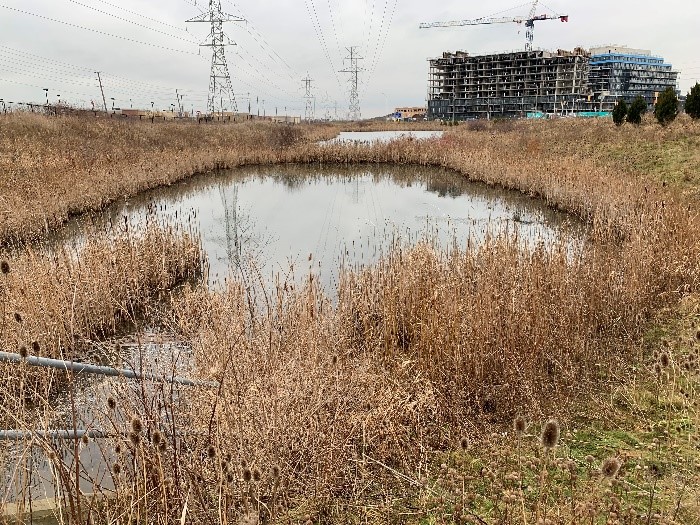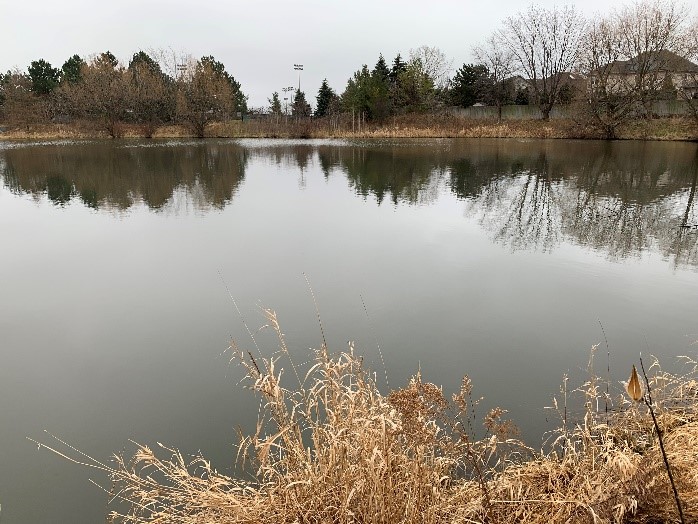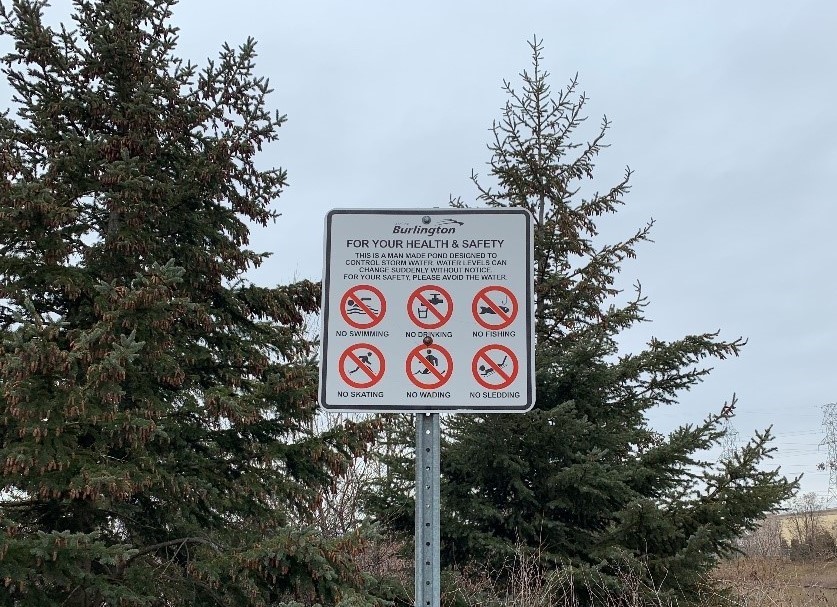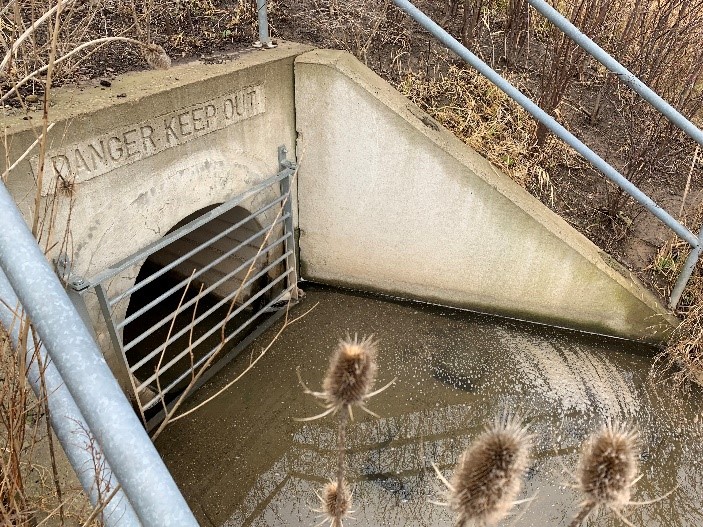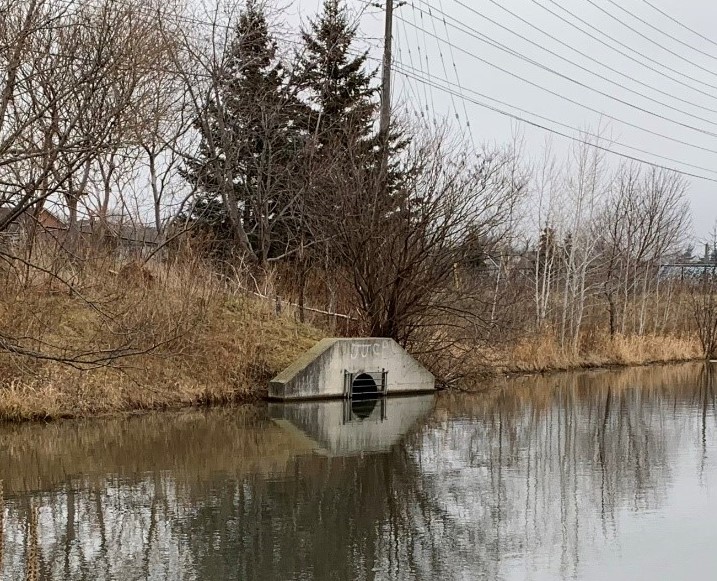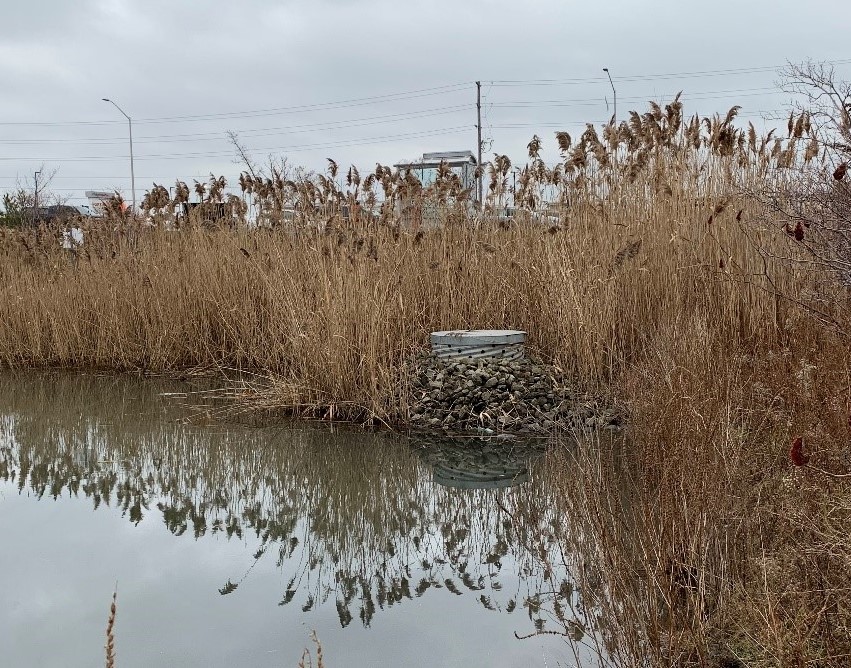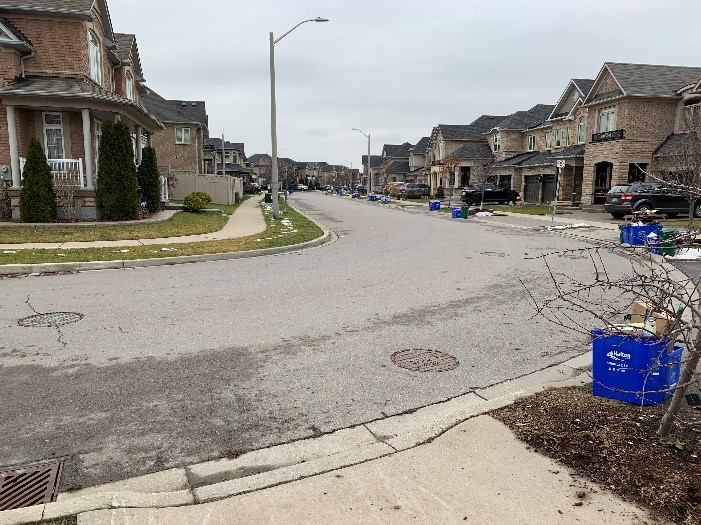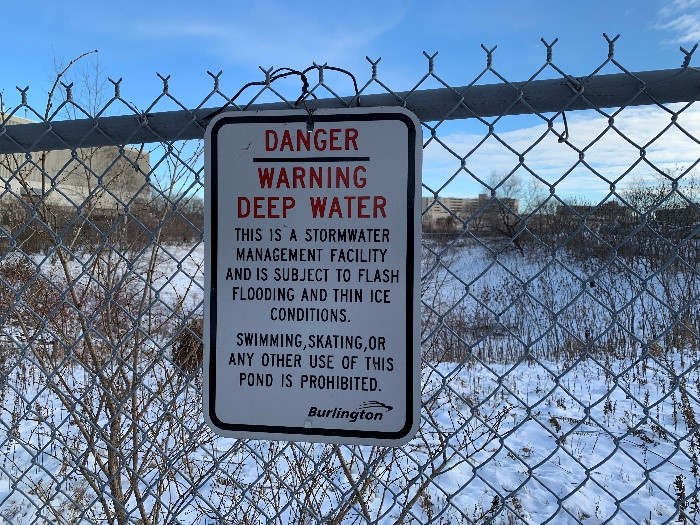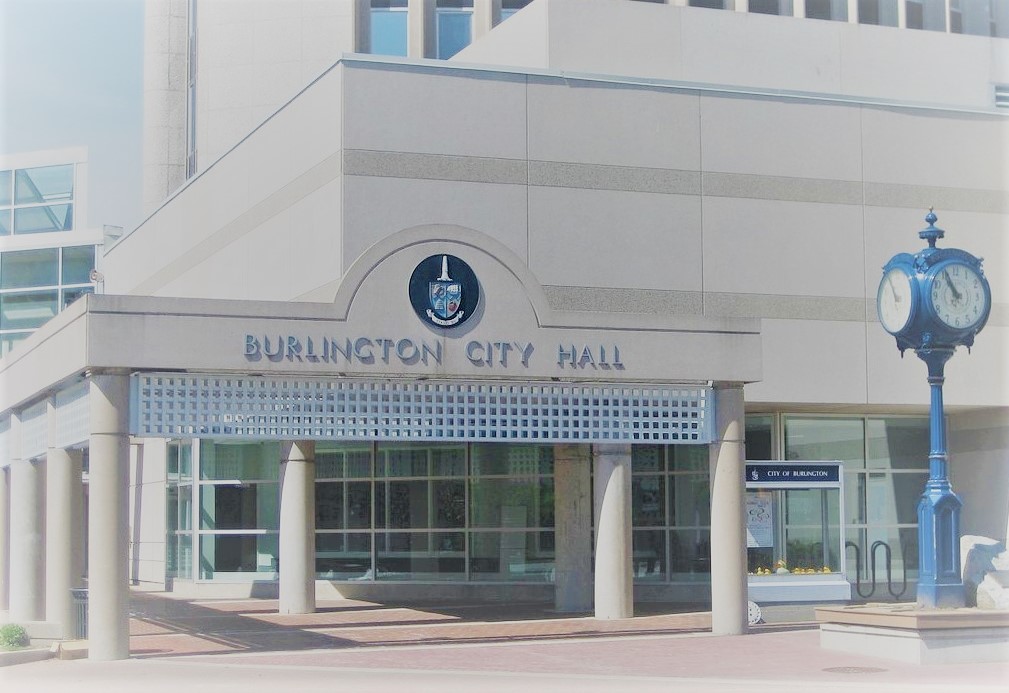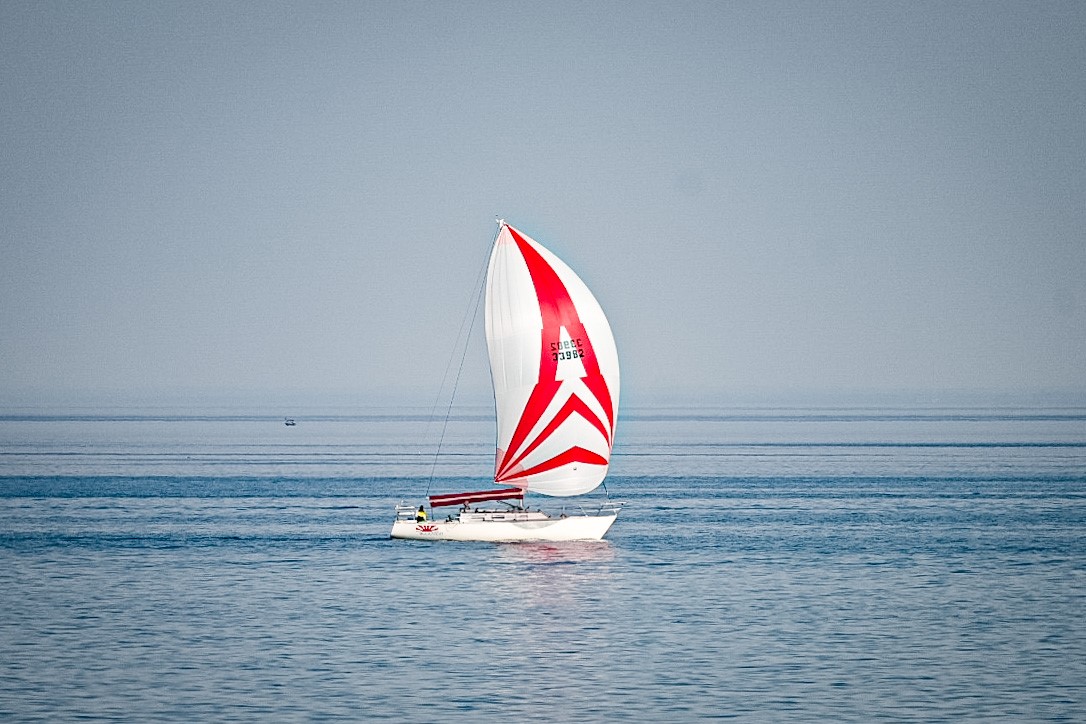When it rains, where does all the water go? Before you say “downhill,” just think: a two-inch rain fall on a city the size of Burlington generates over 9 million m3 of water that the city needs to deal with. The path it takes on its way to Lake Ontario can cause a whole lot of damage if not managed properly. Cities spend a lot of resources and a lot of engineering horsepower on designing their stormwater management infrastructure to get rainwater to its final destination as quickly and efficiently as possible.
Stormwater management systems (catch basins, inlets, ditches, canals, pipes…) are designed to take in a certain volume of water per minute. Up to that point, the pipes fill up and convey water downstream through town. If there is a rain event that dumps more than this maximum volume of water per minute, the system overflows, backs up, and streets start to flood. To ensure that the stormwater management systems are not overwhelmed, the City of Burlington has dozens of surge ponds also known as stormwater management ponds (see Figure 1).
Located throughout the city, these ponds are part of the stormwater management system, helping to equalize flow by storing water during the big rain events. They absorb the shock of the big rain falls, releasing the water more slowly into the underground stormwater pipes in a controlled manner, ensuring that they don’t overflow and cause floods. The ponds can take in a huge surge in volume in a short amount of time, unlike the piping system under the roads. They can handle big fluctuations. The pipes cannot. Since some ponds can rise several feet in a matter of minutes, they are always off-limits to people (see Figure 2). Don’t play here!
Under the city streets and highways is a complex system of pipes and culverts that channel the water through town and into Lake Ontario. The goal of the system is to get the water away from the surfaces (streets, highways, parking lots) as soon as possible through thousands of inlets across the city so that water doesn’t pond on roadways. The first stop for a lot of this water are the surge ponds (see Figure 3).
While the pond can take in a huge amount of water in a short amount of time, it lets the water out in a slower, more controlled and calculated manner so as to never overwhelm the stormwater pipes. They also reduce the amount of sediment and grit in the stormwater, keeping the system cleaner. Outlet structures vary in design depending on the depth of the pond, maximum permissible flow, and what the pond is flowing into (box culvert, open ditch, creek, underground pipe. See Figures 4 and 5.)
In an undeveloped field, rainwater percolates into the ground and goes directly to the water table as opposed to going through the city’s stormwater management system. This is the best way to reduce flow through the pipes. But when land is developed, we tend to cover it up with a lot of hard impermeable surfaces, such as parking lots, roads, and sidewalks (see Figure 6).
Not all ponds hold water between rain events. When they are above the water table, they are called “dry” ponds. These allow some water to percolate into the ground. The outlet structures will have a low-flow opening, allowing the pond to drain (see Figures 7 and 8).
When the city’s stormwater management system is well-designed, -built, and -maintained, the big rain events come and go, escorted through town like the temporary visitors that they are — out of sight and unnoticed. When the system is in bad shape or is inadequate, however, rainwater can be very destructive. The fact that streets don’t flood regularly when it rains is testament to the large amount of underground infrastructure working hard to keep Burlington from washing into Lake Ontario. Let’s make sure this vital infrastructure is given the credit it deserves. Stay safe, and don’t swim in the ponds!
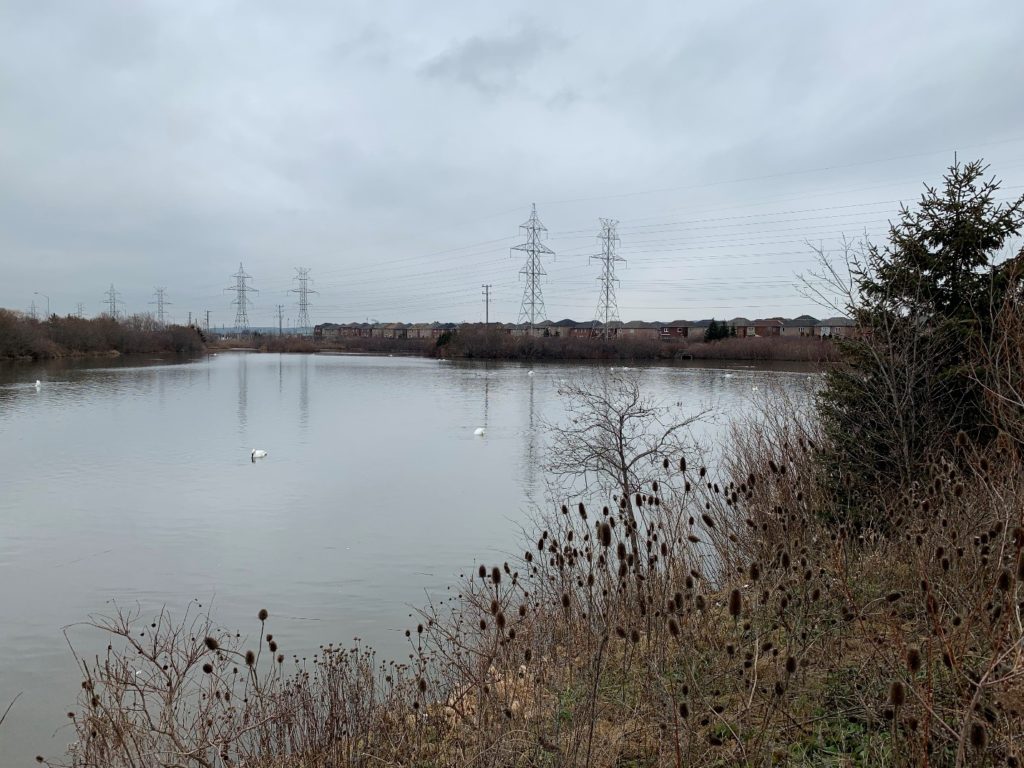
For more information on stormwater management go to:
The City of Hamilton. Stormwater Management Ponds. Url: https://www.hamilton.ca/home-property-and-development/water-sewer/stormwater-management-ponds (accessed Jan. 5, 2022).
The City of Burlington. Stormwater. Url: https://www.burlington.ca/en/services-for-you/Stormwater.asp (accessed Jan. 5, 2022).
For more information on the author: https://www.linkedin.com/in/eric-chiasson-10601082
Correction: Figure 5 has been updated to show the photos as the writer intended; originally Figure 6 photos were erroneously duplicated in Figure 5. Apologies for the inconvenience.


